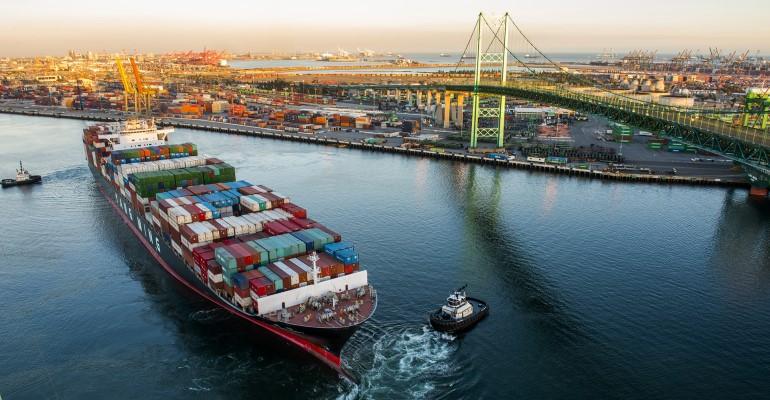Port of Los Angeles (Port of LA) Executive Director Gene Seroka provided some very useful insights into developments at the Federal Maritime Commission (FMC) and on the ongoing efforts among transportation community participants to improve information flows in his monthly briefing.
In his remarks, Seroka presented an upbeat view of the port’s prospects as 2023 winds down, saying that the 2023 deficit, compared to 2022 throughput, had been “cut in half, from 32% down to 16% now”. He added that. “That will continue to improve over the last six weeks of the year.”
The Port of LA’s November programme featured guest speaker Steve Hughes, a long-time participant in the automotive parts business, and representative for cargo shippers at local and Federal levels, who offered a very useful and up-close perspective on matters facing cargo shippers. His involvement with the FMC is extensive; he presently is a member of the FMC’s National Shipper Advisory Committee (NSAC), representing automotive parts shippers.
Related: Bleak times ahead for container shipping: analysts
Just back from a meeting of the Committee in Washington, D.C., Hughes went over a list of recommendation that had been made to the FMC. These include a suggestion that the FMC get involved in “through bills of lading” where ocean cargo is trans-shipped onto rail. Here, Hughes described rail storage and rail demurrage as “a contentious issue for Beneficial Cargo Owners (BCOs),” and suggested that “there is an undisputed gap in authority when it comes to oversight…when there is a through bill of lading.” He explained that NSAC is seeking to give the FMC authority over shipments under these bills of lading, “gives BCO’s an authority to which they can file and arbitrate a dispute.”
Dwell fees (for containers) and early receiving dates (“another contentious issue for BCOs”) have also been a concern of the NSAC, with Hughes hoping for codification of rules and strengthened requirements for dispute resolution. He also talked about efforts to bring more consistency and transparency to “shipment and container-level data.”
Related: Maersk’s container shipping business slumps into the red for Q3
The macro landscape for container trades might be described as “back to normal”. In a recent Flexport webinar, in its “Logistics Rewired” series, Lars Jensen, CEO & Partner, Vespucci Maritime, reminded viewers of the importance of that old standby- the balance of vessel supply and demand. Jensen told the audience that: “Make no mistake, there is too much capacity coming onstream no matter how much we slice and dice it,” and added that: “the cyclical overcapacity that we are heading into is a fairly run of the mill cycle…it’s not a particularly large down-cycle.”
Container analyst John McCown also highlighted the return to normality (though not using that term) in his latest briefing on the top US ports, writing that: “We are now finally back to year on year changes being more fundamentally driven by underlying economic activity”.
His view coincides with that of Port of LA’s Seroka, with McCown saying that the “Coastal gap continues [its] recent reversal with West Coast growth ahead.”
Perhaps Hughes said it best in his remarks, discussing the automotive parts sector, but applicable across a wide range of vertical, and echoing the views from Flexport. He observed that: “We are on the verge of returning to pre-Covid normality” as inventories built up during 2021- 2022 have now been worked downwards. In the Flexport webinar, the presenters opined that: “High interest rates will continue to hamper consumer demand in 2024 and inventory to sales ratios have normalized.”
Quashing notions of a late 2023 pickup in demand (following the reduction of inventories), Vespucci Maritime’s Jensen said: “Going forward…you are not going to see the post inventory-correction pickup in demand, that otherwise would have been expected.”
Reference : https://www.seatrade-maritime.com/containers/container-shipping-return-normal

